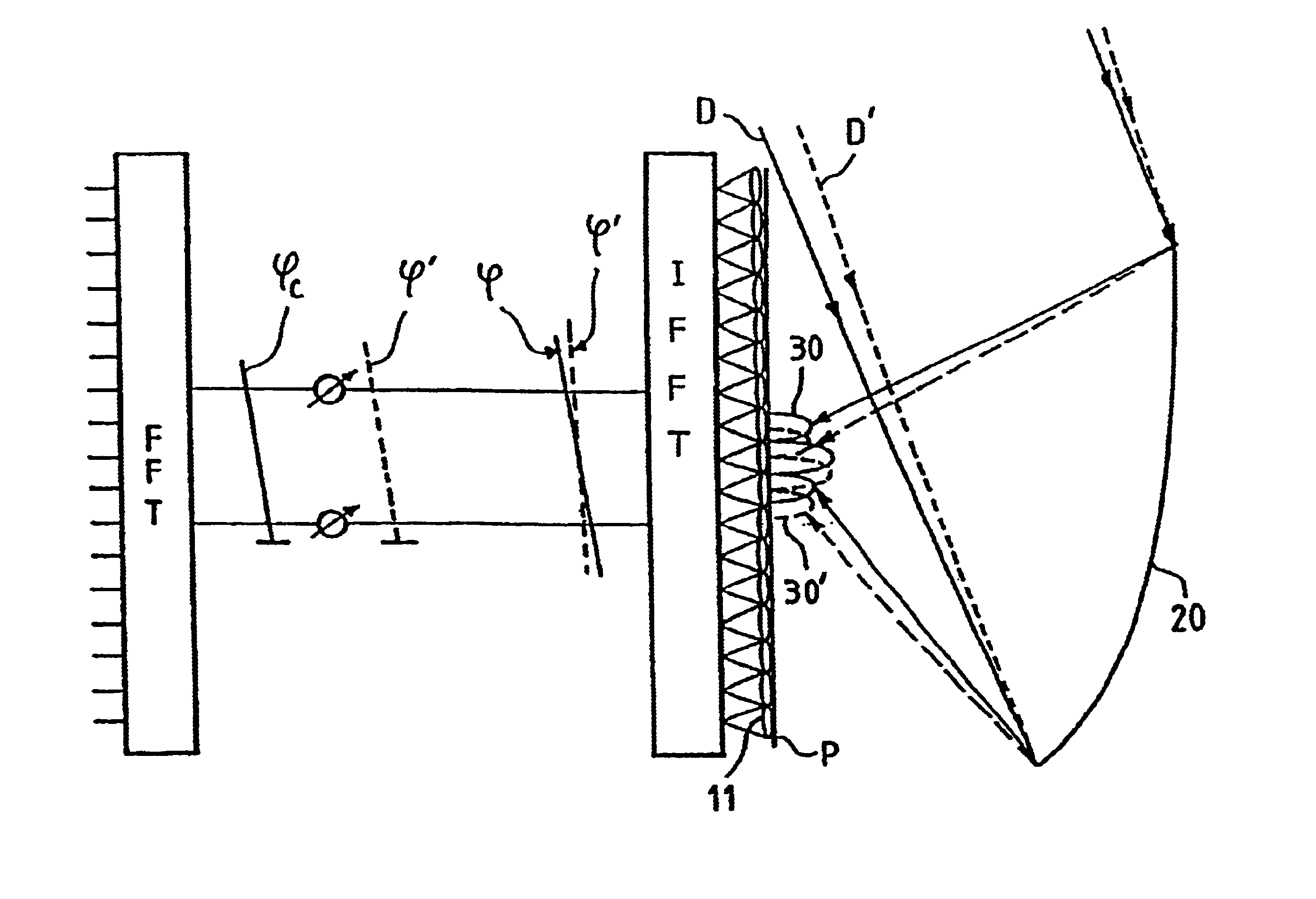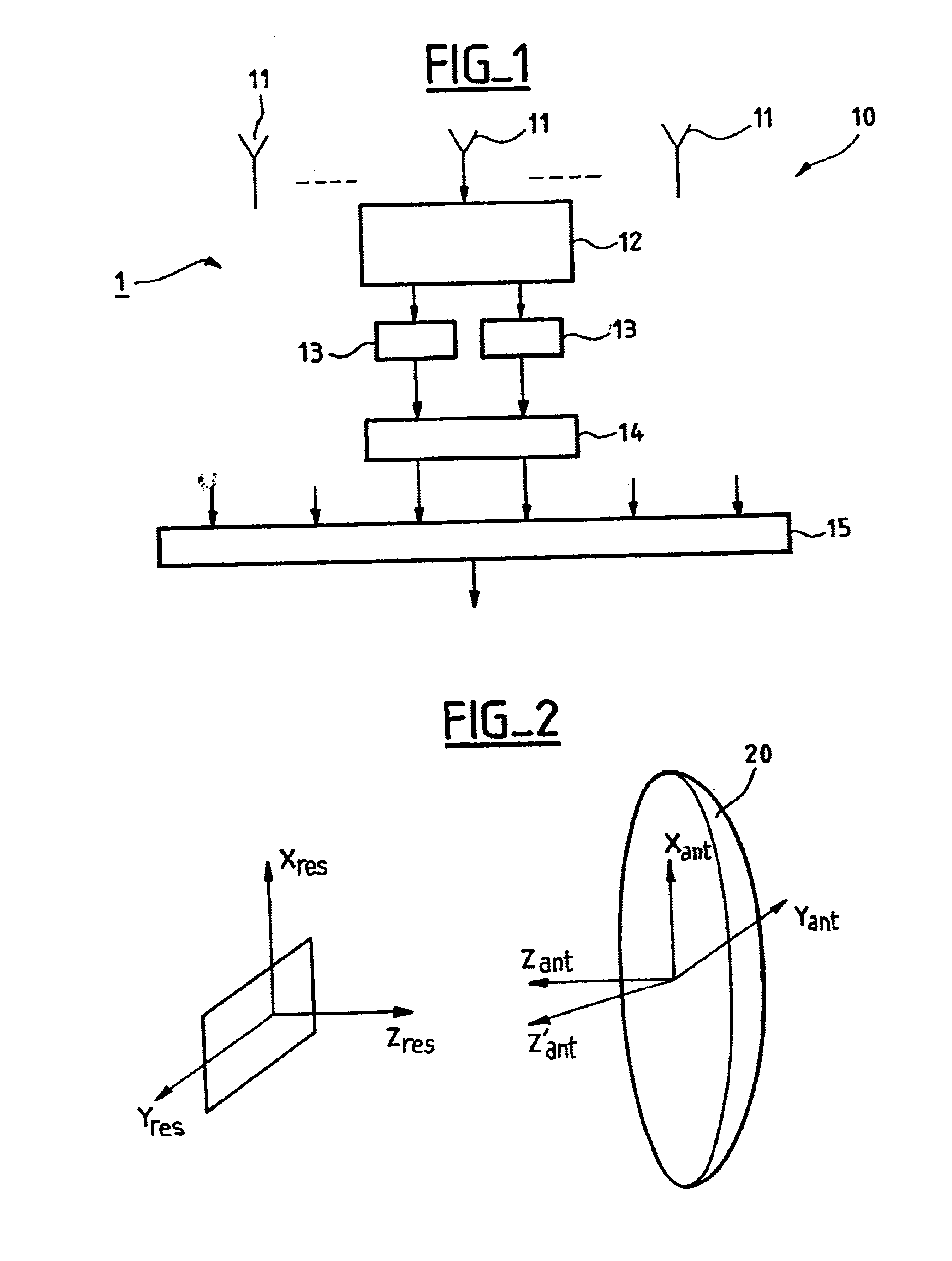Method of repointing a reflector array antenna
a reflector array and array antenna technology, applied in the direction of antennas, electrical equipment, antennas, etc., can solve the problems of pointing error, angular difference, pointing error, etc., and achieve the effect of sufficient accuracy
- Summary
- Abstract
- Description
- Claims
- Application Information
AI Technical Summary
Benefits of technology
Problems solved by technology
Method used
Image
Examples
Embodiment Construction
In all the figures, common items carry the same reference numerals.
As a general rule, beamforming networks have as many inputs as there are radiating elements and as many outputs as there are beams to be formed. There are two types of beamforming: analog beamforming, using a radio frequency medium, and digital beamforming (also referred to as computation beamforming), in which the signal received by the radiating elements is formatted, and then sampled, and then processed by digital processors in order to extract the wanted information from it.
The remainder of the description refers throughout to a receive antenna, but everything to be explained is equally applicable, mutatis mutandis, to transmit antennas, which differ from receive antennas mainly in their practical implementation.
FIG. 1 shows a computation beamforming antenna 1 comprising the following components:
an array 10 of radiating elements 11,
downstream of each radiating element 11 (or of each group of radiating elements), ...
PUM
 Login to View More
Login to View More Abstract
Description
Claims
Application Information
 Login to View More
Login to View More - R&D
- Intellectual Property
- Life Sciences
- Materials
- Tech Scout
- Unparalleled Data Quality
- Higher Quality Content
- 60% Fewer Hallucinations
Browse by: Latest US Patents, China's latest patents, Technical Efficacy Thesaurus, Application Domain, Technology Topic, Popular Technical Reports.
© 2025 PatSnap. All rights reserved.Legal|Privacy policy|Modern Slavery Act Transparency Statement|Sitemap|About US| Contact US: help@patsnap.com



